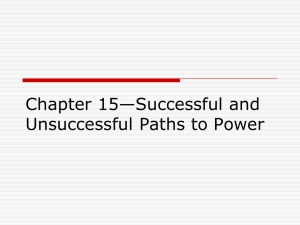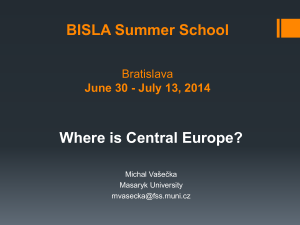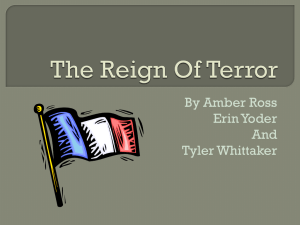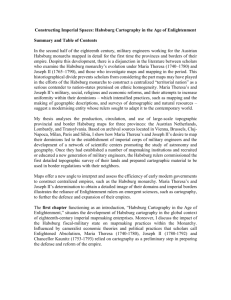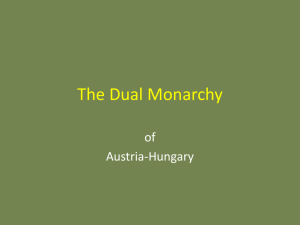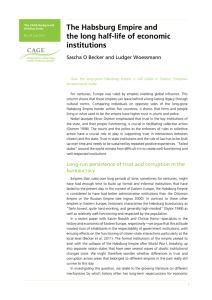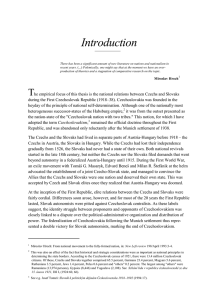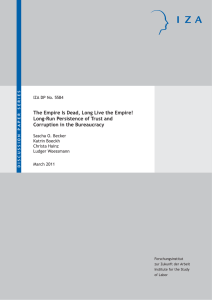The Nationalities in the Ottoman and the Habsburg Empire in the
advertisement
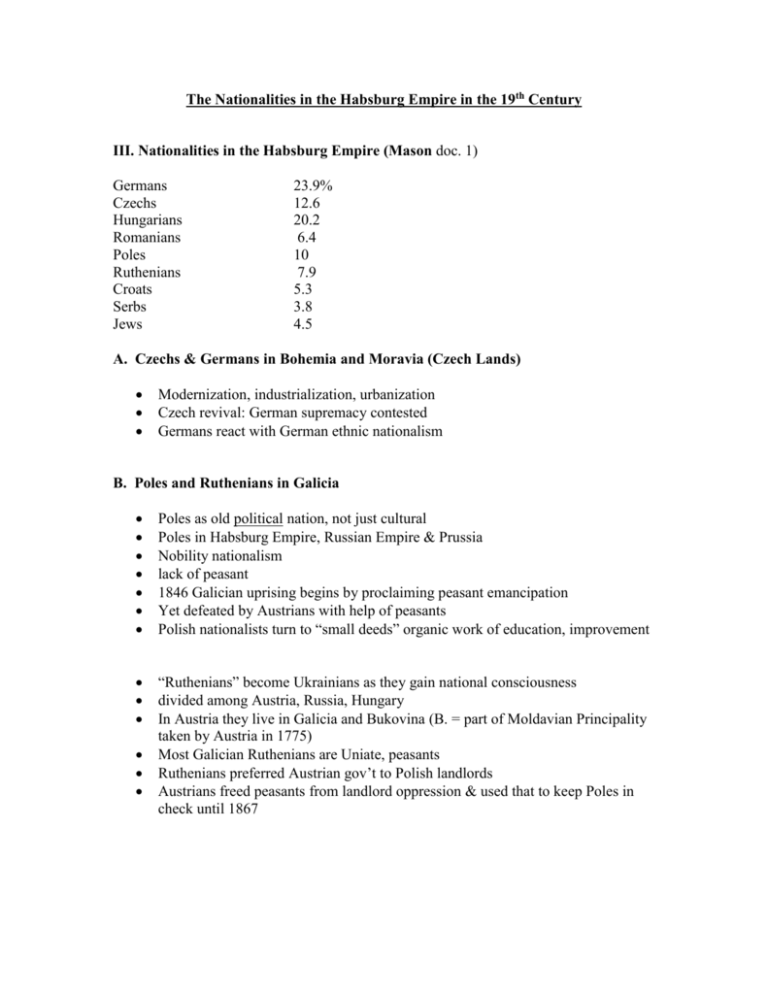
The Nationalities in the Habsburg Empire in the 19th Century III. Nationalities in the Habsburg Empire (Mason doc. 1) Germans Czechs Hungarians Romanians Poles Ruthenians Croats Serbs Jews 23.9% 12.6 20.2 6.4 10 7.9 5.3 3.8 4.5 A. Czechs & Germans in Bohemia and Moravia (Czech Lands) Modernization, industrialization, urbanization Czech revival: German supremacy contested Germans react with German ethnic nationalism B. Poles and Ruthenians in Galicia Poles as old political nation, not just cultural Poles in Habsburg Empire, Russian Empire & Prussia Nobility nationalism lack of peasant 1846 Galician uprising begins by proclaiming peasant emancipation Yet defeated by Austrians with help of peasants Polish nationalists turn to “small deeds” organic work of education, improvement “Ruthenians” become Ukrainians as they gain national consciousness divided among Austria, Russia, Hungary In Austria they live in Galicia and Bukovina (B. = part of Moldavian Principality taken by Austria in 1775) Most Galician Ruthenians are Uniate, peasants Ruthenians preferred Austrian gov’t to Polish landlords Austrians freed peasants from landlord oppression & used that to keep Poles in check until 1867 2 C. Hungarians old noble nation with tradition of uninterrupted statehood. Kingdom included Slovak, Serb, Romanian, Ruthenian peasants. Croats also nobility. Non-Magyars became Magyarized as they became educated D. Romanians (Transylvania, Moldavia, Wallachia) In Transylvania intense interest in the ancient Latin/Roman heritage argue for political recognition in Habsburg Empire Cultural work in 18th cent. impetus to national movements all over Balkans and Central Europe As Wallachian and Moldavian Romanians make progress toward independence Transylvanian Romanians look to them Irredentism E. Slovaks in Hungary since medieval times. 19th century cultural revival and contacts with Czechs: linguistic kinship & panSlavism Slovaks less modern than Czechs, more rural Hussite movement Czech phenomenon, Slovaks more pious F. Croats allied with Hungarian Crown from M.A. Croats interpret medieval union as voluntary between 2 noble nations. Catholics they looked West cultural revival “Illyrian” national movement G. Jews Dispersed nation Urban minority vulnerable to charge of not being native modernization brings other ethnic groups into competition with Jews loyal to the Habsburg Monarchy or to non-Jewish liberal national movements (Hungarian, Polish, Czech) Jewish national movement, Zionism, in 1880s-90s—in reaction to other nationalisms that excluded them
